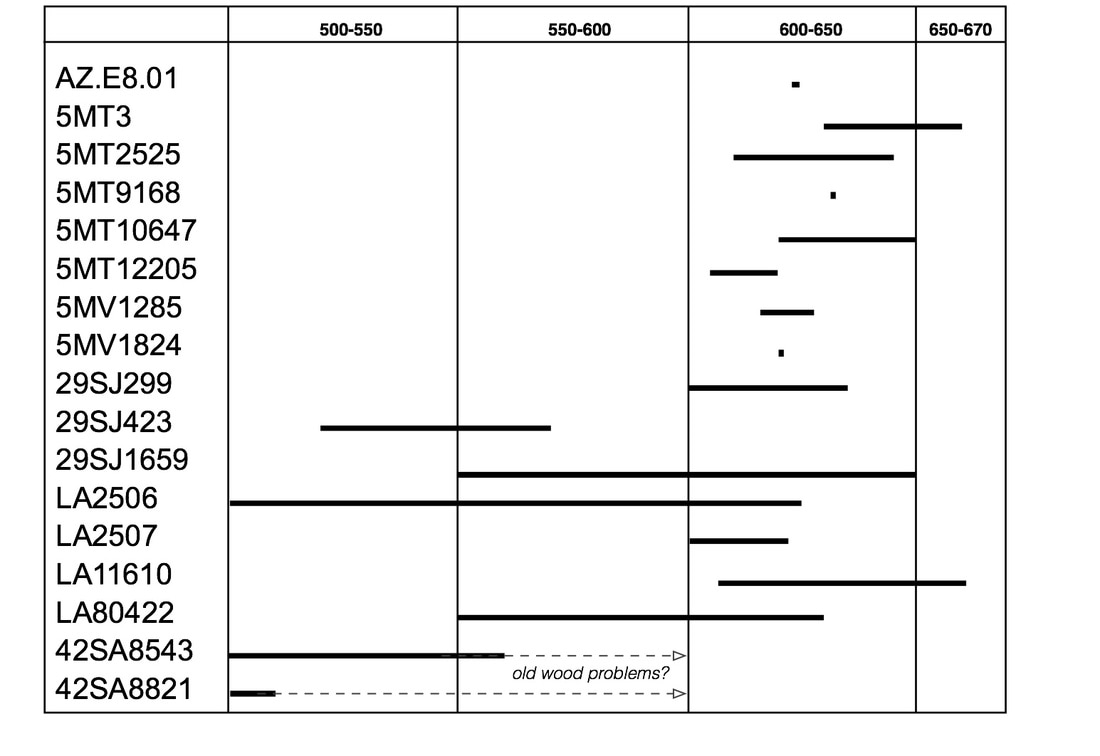Through Time: the Temporal Distribution of Motif 1 During the Period 575-650
All 17 sites were dated by dendrochronology and/or radiocarbon analysis, as shown in the chart below. The longer horizontal lines indicate the general period of site occupation, while the short lines indicate a single dendrochronological date.
The Arizona and Colorado sites were occupied almost exclusively between 600-650. Of the seven New Mexico sites, four were occupied prior to 600, and the remaining three were roughly contemporaneous with the Arizona and Colorado sites. The two Utah sites have such wide date ranges, and the possibility of old wood use, that they cannot be categorized further.
The Basic form, represented only at the Arizona and three Colorado sites, was apparently developed sometime between 600-650. The Reduced form, present at the two earliest New Mexico sites, was probably developed by 550-600. The Joined form was developed by 600-650, and possibly, based on the NFS assemblage, even earlier, sometime during 550-600.
The Basic form, represented only at the Arizona and three Colorado sites, was apparently developed sometime between 600-650. The Reduced form, present at the two earliest New Mexico sites, was probably developed by 550-600. The Joined form was developed by 600-650, and possibly, based on the NFS assemblage, even earlier, sometime during 550-600.

